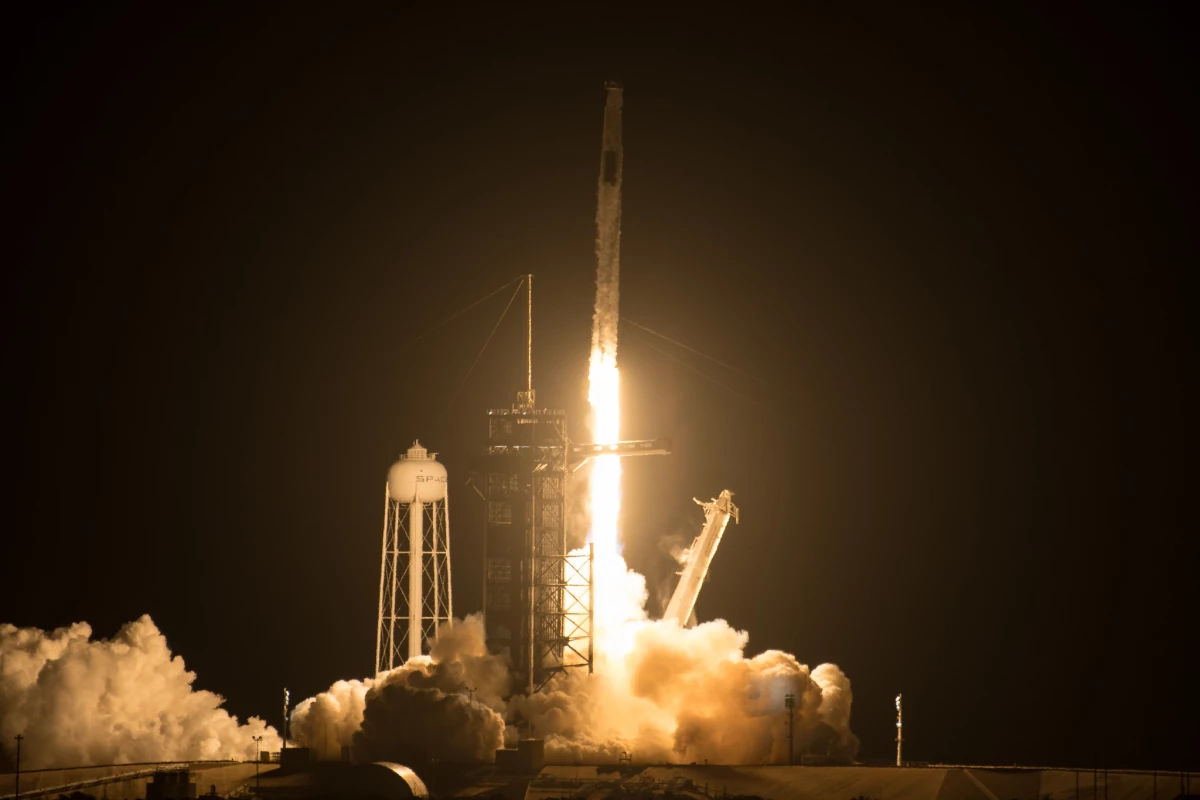NASA and SpaceX have successfully launched the second long-term Crew Dragon mission to the International Space Station (ISS) from American soil. The capsule, named Endeavor, was launched atop a SpaceX Falcon 9 rocket from Complex 39A of NASA’s Kennedy Space Center in Florida.
SpaceX’s Crew Dragon spacecraft is a human-rated spacecraft developed as part of NASA’s Commercial Crew Program (CCP). The CCP sought to bring crewed launches back to American soil and end the United States’ reliance on the Russian-made Soyuz spacecraft by encouraging the development of spacecraft by the private sector.
Crew Dragon was one of two capsules selected by NASA for final development. Today’s launch marked the second time that the newly developed spacecraft has carried astronauts on a long-duration mission to the ISS. To date, Boeing – the lead developer of the other spacecraft selected under the Commercial Crew Program – has not completed a single crewed mission.
For the April 23 launch, SpaceX and NASA opted to use the same Falcon 9 rocket that had been used for the earlier successful November 2020 Crew-1 mission. Furthermore, the capsule has also seen action before when it was used to transport Robert Behnken and Douglas Hurley to space during the Demo-2 mission in May 2020.
This latest mission is crewed by NASA astronauts Shane Kimbrough and Megan McArthur, along with JAXA astronaut Akihiko Hoshide and ESA astronaut Thomas Pesquet, who will join the seven astronauts and cosmonauts already aboard the orbital station. Alongside its human payload, Endeavor will also transport 113 kg (250 lb) of cargo and science experiments to the station.

The Falcon 9 roared into the predawn sky above the Kennedy Space Center at 5:49 am EDT, and proceeded upwards through Earth’s atmosphere. Following first stage separation, the upper stage and its crew capsule proceeded on a nominal trajectory, before firing its vacuum-optimized engine to deliver the crew safely into orbit. Meanwhile, the now detached booster segment coasted to its apogee and then began to fall back toward Earth.
Around seven and a half minutes into the mission the Falcon 9 main stage fired up three of its engines and executed a 29-second burn to slow its descent prior to passing into the densest section of Earth’s atmosphere. The booster then fired once more on final approach, bringing it to land safely on the deck of the drone ship Of Course I Still Love You, in the Atlantic Ocean.
Twelve minutes and nine seconds after launch, back up in space the Crew Dragon capsule finally separated from the upper stage of its Falcon 9 rocket. At this point the crew were traveling at almost 17,000 mph (37,000 km/h) in an orbit with a periapsis (lowest point) of 190 km (118 miles) and an apoapsis (highest point) of 210 km (130 miles).
The crew are now in the process of executing a series of five major burns, which will place their spacecraft on a rendezvous trajectory with the ISS. The Crew Dragon is expected to dock with the station at 5.10 am EDT on April 24. It will then remain docked to the most forward port of the ISS's Harmony module for around six months before returning to Earth.
Source: NASA





